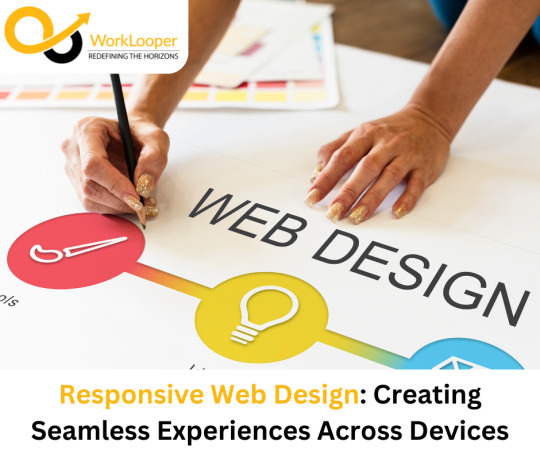Don't wanna be here? Send us removal request.
Text
Web Development Services in Canada
If you are looking for the best web development services in Canada, then no need to worry. Because WorkLooper Consultants Inc. is ready with a full team of expert developers who can serve you the best, smoothest, and most user-friendly web development solutions
0 notes
Text
Game Development Services in Canada
WorkLooper Consultants Inc. is one of the popular game development companies that offers the best quality game development services in Canada. It offers the best game development services including the whole process from pre-production to post-production according to the client’s preferences and targets to capture the attention of audiences.
0 notes
Text

WorkLooper Consultants Inc. is one of the popular game development companies that offers the best quality game development services in Canada. It offers the best game development services including the whole process from pre-production to post-production according to the client’s preferences and targets to capture the attention of audiences.
0 notes
Text
Web Design Tools: Essential Assets for Crafting Exceptional Websites

In the ever-evolving landscape of the internet, a compelling online presence is paramount for businesses and individuals alike. Whether you're a budding entrepreneur, an established corporation, or a creative professional showcasing your portfolio, having a visually captivating and user-friendly website is non-negotiable. Achieving this feat requires the right blend of creativity, expertise, and of course, the right tools. Enter web design tools – the indispensable assets that empower designers and developers to bring their visions to life.
Empowering Creativity with Web Design Tools
Web design tools encompass a diverse array of software and platforms designed to facilitate the creation, management, and optimization of websites. From graphic design software like Adobe Photoshop and Illustrator to sophisticated website builders like WordPress and Wix, these tools offer a myriad of functionalities tailored to suit various aspects of the web design process.
Key Features of Web Design Tools
At the core of web design tools lie features geared towards enhancing both the aesthetic appeal and functionality of websites. These features typically include:
Drag-and-Drop Interface: Simplifying the design process by allowing users to intuitively place elements on the canvas without the need for extensive coding knowledge.
Responsive Design Capabilities: Ensuring that websites are optimized for seamless viewing across devices of all sizes, from desktop computers to smartphones and tablets.
Customization Options: Empowering designers to tailor every aspect of their website, from color schemes and typography to layout and navigation, to reflect their unique brand identity.
SEO Integration: Incorporating tools and features that enable users to optimize their website for search engines, thereby improving visibility and driving organic traffic.
E-commerce Functionality: Providing built-in tools and plugins for creating online stores, managing inventory, processing payments, and tracking sales.
Choosing the Right Web Design Company
While web design tools offer tremendous flexibility and autonomy, many businesses and individuals opt to enlist the web design services of professional companies to ensure a polished and professional online presence. When selecting a web design company, consider the following factors:
Portfolio: Review the company's portfolio to gauge the quality and diversity of their previous work. Look for examples that resonate with your aesthetic preferences and business objectives.
Expertise and Experience: Choose a company with a proven track record of delivering exceptional results in web design. An experienced team will possess the technical skills and creative insights necessary to bring your vision to life.
Client Testimonials: Seek out testimonials and reviews from past clients to gain insights into the company's reliability, professionalism, and customer satisfaction.
Communication and Collaboration: Opt for a company that prioritizes clear and transparent communication throughout the design process. A collaborative approach ensures that your feedback and input are valued and incorporated into the final product.
Post-launch Support: Select a company that offers ongoing support and maintenance services to ensure that your website remains secure, up-to-date, and optimized for performance.
Conclusion
In conclusion, web design tools play a pivotal role in the creation and management of modern websites, empowering designers and developers to unleash their creativity and deliver exceptional user experiences. Whether you're embarking on a DIY website project or seeking professional assistance from a web design company, investing in the right tools and expertise is essential for achieving online success.
0 notes
Text
0 notes
Text
Responsive Web Design: Creating Seamless Experiences Across Devices

In today's digital era, where browsing occurs across various devices, from smartphones to desktops, ensuring a seamless user experience is paramount. Responsive web design addresses this need by adapting websites to different screen sizes and orientations. Let's delve into the intricacies of responsive web design and its significance in modern web development.
Introduction to Responsive Web Design
Responsive web design is an approach to designing and building websites that respond dynamically to the user's behavior and environment, based on screen size, platform, and orientation. It ensures that users have a consistent experience, regardless of the device they use to access the site.
Importance of Responsive Design in Web Development
With the proliferation of mobile devices, responsive design has become a necessity rather than a luxury. It allows websites to reach a broader audience and provides users with a seamless browsing experience across all devices. Additionally, responsive websites tend to perform better in search engine rankings, as Google prioritizes mobile-friendly sites.
Key Principles of Responsive Design
Responsive design is guided by several key principles, including fluid grids, flexible images, and media queries. These principles enable websites to adapt their layout and content to different screen sizes and resolutions, ensuring optimal viewing and interaction experiences for users.
Benefits of Responsive Web Design
Improved User Experience: Responsive websites provide a consistent and intuitive user experience across all devices, leading to higher engagement and satisfaction.
Increased Accessibility: By catering to users on various devices, responsive design ensures that everyone can access and interact with the website effectively.
Better SEO Performance: Responsive websites are favored by search engines, leading to higher rankings and increased visibility in search results.
Common Challenges in Implementing Responsive Design
Despite its many benefits, implementing responsive design can pose challenges for web developers. These challenges include browser compatibility issues, performance optimization, and complex navigation structures. However, with careful planning and testing, these challenges can be overcome.
Best Practices for Responsive Web Design
Mobile-First Approach: Start by designing for mobile devices and then scale up for larger screens. This ensures that the website performs well on smaller devices.
Prioritize Content: Focus on delivering the most important content and features to users, particularly on smaller screens where space is limited.
Testing and Iteration: Regularly test the website on different devices and browsers to identify and address any compatibility issues that may arise.
Tools and Resources for Responsive Web Design
Various tools and resources are available to assist developers in creating responsive websites. Frameworks like Bootstrap and Foundation provide pre-built components and layouts, while testing tools like BrowserStack and Responsinator help ensure compatibility across different devices and browsers.
Future Trends in Responsive Design
The future of responsive design holds exciting possibilities, including AI-driven responsive design, augmented reality integration, and voice user interface optimization. These advancements have the potential to further enhance the user experience and push the boundaries of web design.
Case Studies
Several businesses and organizations have successfully implemented responsive design to improve their online presence and user experience. Case studies highlight the benefits of responsive design in terms of increased traffic, engagement, and conversions, demonstrating its effectiveness in driving business growth and success.
Conclusion
In conclusion, responsive web design is essential for creating websites that provide a seamless user experience across all devices. By adhering to key principles, overcoming challenges, and adopting best practices, developers can create responsive websites that engage users and drive results.
0 notes
Text
Graphic Design Software: Unleashing Creativity Digitally
In the realm of digital creativity, graphic design software serves as the cornerstone for artists and designers alike. These powerful tools empower individuals to bring their imaginations to life, whether it's designing logos, creating illustrations, or editing photos. Let's delve into the world of graphic design software and explore its significance, types, popular options, considerations for selection, and emerging trends.
Graphic design software revolutionizes the way visual content is created and manipulated in the digital age. With an array of features and functionalities, these tools provide a versatile platform for expressing creativity and delivering impactful visuals across various mediums.
Importance of Graphic Design Software
Graphic design software plays a pivotal role in diverse industries, including advertising, marketing, publishing, and digital media. From branding materials to digital artwork, these tools enable professionals and enthusiasts to craft visually stunning and compelling content that captivates audiences.
Types of Graphic Design Software
Vector Graphics Editors
Vector graphics editors, such as Adobe Illustrator and CorelDRAW, are used for creating scalable graphics with precision and clarity. They utilize mathematical equations to define shapes, making them ideal for designing logos, icons, and illustrations.
Raster Graphics Editors
Raster graphics editors, like Adobe Photoshop and GIMP, manipulate images pixel by pixel, allowing for detailed photo editing and digital painting. They are widely used for tasks such as retouching photos, creating digital artwork, and designing web graphics.
Desktop Publishing Software
Desktop publishing software, such as Adobe InDesign, enables users to layout and design documents for print or digital distribution. It is commonly used for creating publications like brochures, magazines, and newsletters.
Photo Editing Software
Photo editing software, like Adobe Lightroom and Affinity Photo, specializes in enhancing and retouching digital photographs. These tools offer advanced editing features such as color correction, image manipulation, and batch processing.
Popular Graphic Design Software
Adobe Photoshop
Adobe Photoshop is a versatile raster graphics editor known for its extensive features and capabilities. It is widely used for photo editing, digital painting, graphic design, and web development.
Adobe Illustrator
Adobe Illustrator is a powerful vector graphics editor favored by designers for creating logos, illustrations, and typography. It offers precision drawing tools, flexible brush options, and seamless integration with other Adobe Creative Cloud applications.
CorelDRAW
CorelDRAW is a comprehensive vector graphics suite that provides tools for illustration, layout, photo editing, and typography. It is popular among professionals and hobbyists for its intuitive interface and robust feature set.
Affinity Designer
Affinity Designer is a vector graphics editor known for its speed, precision, and affordability. It offers advanced features such as non-destructive editing, unlimited artboards, and real-time pixel preview.
GIMP
GIMP (GNU Image Manipulation Program) is a free and open-source raster graphics editor suitable for tasks like photo retouching, image composition, and graphic design. It provides a wide range of tools and plugins for enhancing creativity.
Considerations When Choosing Graphic Design Software
Features and Functionality
Consider the specific requirements of your projects and ensure that the software you choose offers the necessary features and tools to meet your needs.
Ease of Use
Evaluate the user interface and workflow of the software to ensure it aligns with your level of expertise and comfort. Look for intuitive controls and customizable settings that streamline the design process.
Compatibility
Ensure that the software is compatible with your operating system and other applications or devices you may need to integrate with. Compatibility issues can hinder productivity and workflow efficiency.
Cost
Consider the pricing model of the software, whether it's a one-time purchase, subscription-based, or open-source. Factor in your budget and long-term investment when making your decision.
Emerging Trends in Graphic Design Software
Artificial Intelligence Integration
AI-powered features, such as image recognition, content-aware fill, and predictive design suggestions, are increasingly being integrated into graphic design software to enhance productivity and creativity.
Cloud-based Collaboration
Cloud-based platforms enable seamless collaboration and file sharing among team members, allowing
0 notes
Text
Graphic Designing Software: Unleashing Creativity Digitally

In the dynamic world of design, graphic designing software plays a pivotal role in unleashing creativity, enabling designers to bring their visions to life with precision and efficiency. In this article, we will explore the significance of graphic designing software, its evolution, key features, popular options, emerging trends, tips for effective usage, and real-world case studies.
Importance of Graphic Designing Software
Graphic designing software has revolutionized the way designers conceptualize, create, and deliver visual content. From digital illustrations to branding materials, these tools empower designers to craft compelling visuals that resonate with audiences across various platforms.
Evolution of Graphic Design Software
From Traditional to Digital Tools
The evolution of graphic design software traces back to the transition from traditional, analog tools to digital platforms. This shift opened new possibilities for experimentation, iteration, and collaboration in the design process.
Rise of Industry Standard Software
Over the years, certain graphic design software has emerged as industry standards, setting the benchmark for functionality, versatility, and reliability. These tools have become indispensable for professionals and amateurs alike.
Key Features of Graphic Design Software
Design Tools
Graphic design software offers a plethora of tools for creating and manipulating visual elements, including drawing tools, brushes, typography options, color palettes, and photo editing features.
Templates and Assets
Pre-designed templates and assets provide a starting point for design projects, offering inspiration and streamlining the creation process. These resources range from layout templates to stock photos, icons, and fonts.
Collaboration Features
Many graphic design software platforms include collaboration features, allowing multiple users to work on projects simultaneously, share feedback, and collaborate in real-time, regardless of geographical locations.
Popular Graphic Design Software
Adobe Creative Cloud Suite
Adobe's Creative Cloud Suite remains a dominant force in the graphic design industry, offering a comprehensive suite of software, including Photoshop, Illustrator, InDesign, and more.
Affinity Designer
Affinity Designer is gaining popularity for its robust feature set and affordable pricing. It offers professional-grade vector graphic design capabilities, comparable to Adobe Illustrator.
Sketch
Sketch is favored by many UI/UX designers for its intuitive interface and focus on digital design. It's known for its flexibility and efficiency in creating responsive web and mobile interfaces.
Canva
Canva caters to a broader audience, including beginners and non-designers. It offers a user-friendly interface, drag-and-drop functionality, and a vast library of templates and design elements.
Graphic Design Software Trends
AI Integration
Artificial intelligence is being integrated into graphic design software to automate repetitive tasks, enhance photo editing capabilities, and provide intelligent design suggestions.
Cloud-Based Solutions
Cloud-based graphic design software allows for seamless collaboration, remote access to projects, and automatic updates, eliminating the need for manual installations and backups.
Mobile Accessibility
With the proliferation of mobile devices, graphic design software is becoming more accessible on smartphones and tablets, enabling designers to work on the go and share their creations instantly.
Choosing the Right Graphic Design Software
Assessing Needs and Skill Level
Consider your specific design requirements, such as illustration, photo editing, or layout design, and choose software that aligns with your skill level and workflow preferences.
Budget Considerations
Evaluate the pricing models of different graphic design software options, including subscription-based models, one-time purchases, and free versions, to find the best fit for your budget.
Trial and Demo Versions
Take advantage of trial and demo versions offered by graphic design software providers to test functionality, explore features, and determine compatibility with your workflow before making a commitment.
Tips for Effective Graphic Design Software Usage
Learn the Basics
Invest time in learning the fundamentals of graphic design principles and software tools through tutorials, online courses, and hands-on practice to build a strong foundation.
Stay Updated with Tutorials
Keep abreast of new features, techniques, and best practices by following tutorials, blogs, and forums dedicated to graphic design software.
Experiment and Practice
Don't be afraid to experiment with different tools, techniques, and styles. Practice regularly to hone your skills, explore creative possibilities, and discover your unique design voice.
Conclusion
The Power of Graphic Design Software Graphic designing services empowers designers to express their creativity, communicate ideas effectively, and shape memorable brand experiences in today's digital landscape. Whether you're a seasoned professional or an aspiring designer, embracing the capabilities of graphic design software opens a world of possibilities for innovation and expression.
0 notes
Text
Exploring the Latest Web Development Trends

In the fast-paced digital landscape, web development trends play a pivotal role in shaping the way we interact with the internet. From enhancing user experience to embracing emerging technologies, staying abreast of the latest trends is essential for businesses and developers alike.
Importance of Web Development Trends
Web development trends are more than just passing fads; they represent the evolving needs and expectations of users. Embracing these trends enables businesses to stay competitive and deliver exceptional online experiences.
Responsive Web Design
Enhancing User Experience
Responsive web design ensures that websites adapt seamlessly to various devices and screen sizes. By prioritizing responsiveness, businesses can provide a consistent and user-friendly experience across desktops, tablets, and smartphones.
Mobile Optimization
With the majority of internet traffic originating from mobile devices, optimizing websites for mobile is no longer optional. Mobile optimization involves considerations such as fast loading times, intuitive navigation, and touch-friendly design elements.
Progressive Web Apps (PWAs)
Seamless User Experience
Progressive web apps combine the best of web and mobile applications, offering a seamless user experience. They load instantly, even in uncertain network conditions, and provide features like push notifications and offline access.
Offline Capabilities
One of the key features of PWAs is their ability to function offline, allowing users to access content and perform tasks even without an internet connection. This offline capability enhances accessibility and convenience.
Serverless Architecture
Scalability and Cost-Effectiveness
Serverless architecture abstracts away the management of servers, allowing developers to focus on writing code. This approach offers scalability, as resources are automatically scaled based on demand, and cost-effectiveness, as businesses only pay for actual usage.
WebAssembly
High-Performance Web Applications
WebAssembly enables running high-performance code in the browser, opening up possibilities for complex web applications that rival native desktop applications in terms of speed and performance.
Dark Mode Design
Reduced Eye Strain
Dark mode design, characterized by dark color schemes, reduces eye strain, particularly in low-light conditions. Many users prefer dark mode for its visual comfort and battery-saving benefits on devices with OLED screens.
Battery Savings
On devices with OLED screens, dark mode design can significantly reduce power consumption, leading to extended battery life. This makes dark mode an attractive option for users looking to conserve battery power.
Voice Search Optimization
Catering to Changing User Behavior
With the rising popularity of voice-activated devices and virtual assistants, optimizing websites for voice search is becoming increasingly important. Voice search optimization involves structuring content for natural language queries and providing concise, relevant answers.
Artificial Intelligence Integration
Personalized Experiences
Artificial intelligence is revolutionizing web development by enabling personalized user experiences. From product recommendations to chatbots that simulate human conversation, AI-powered features enhance engagement and satisfaction.
Chatbots and Automation
Chatbots are becoming commonplace on websites, providing instant assistance to users and automating routine tasks. By leveraging natural language processing and machine learning, chatbots offer efficient customer support and streamline processes.
Cybersecurity Measures
Protecting User Data
Cybersecurity is paramount in web development, particularly with the increasing frequency of data breaches and cyber attacks. Implementing measures such as SSL certificates, encryption, and regular security audits helps safeguard user data and maintain trust.
Low-Code/No-Code Development
Rapid Prototyping
Low-code and no-code development platforms empower individuals with limited coding experience to build web applications quickly and efficiently. These platforms facilitate rapid prototyping and collaboration between developers and non-developers.
Empowering Non-Developers
By democratizing the development process, low-code/no-code platforms enable business users to take ownership of their ideas and bring them to life without relying solely on technical expertise.
Conclusion
Embracing the Future of Web Development
In conclusion, staying ahead of web development services is essential for businesses seeking to deliver exceptional online experiences. From responsive design to AI integration, embracing these trends enables businesses to remain competitive and meet the evolving needs of users in the digital age.
0 notes
Text
0 notes
Text
Unity Game Development Services: Navigating the Digital Playground
In the dynamic world of digital entertainment, Game development services have emerged as a driving force behind the creation of captivating and immersive gaming experiences. As the demand for unique and engaging games continues to rise, the significance of Unity in the game development landscape becomes more evident.

Advantages of Unity Game Development
Unity's appeal lies in its versatility and efficiency. Its cross-platform compatibility and robust 3D development capabilities make it a preferred choice for developers aiming to reach a wide audience without compromising on visual quality.
Versatility in Game Genres
One of Unity's standout features is its adaptability to various game genres. Whether it's a mobile puzzle game, a console action-adventure, or a virtual reality experience, Unity game development tools and flexibility needed to bring diverse gaming visions to life. Examples of successful Unity games, such as Monument Valley and Hollow Knight, demonstrate its broad spectrum of applicability.
Seamless Collaboration in Unity
The collaborative features of Unity contribute to enhanced team productivity. Real-time editing and collaboration streamline the development process, allowing multiple team members to work on different aspects of the game simultaneously.
Unity's Asset Store and Resources
Access to Unity's extensive Asset Store and community resources empowers developers with a vast library of assets. This not only accelerates the development process but also fosters a collaborative environment where developers can share knowledge and solutions.
Unity's Integration with AR and VR
Unity stands at the forefront of augmented and virtual reality experiences. Its seamless integration with AR and VR technologies opens up new possibilities in gaming and extends its applications beyond the entertainment industry.
SEO-Friendly Game Development Websites
For game developers, having an SEO-friendly website is crucial for visibility. Optimizing game development websites ensures they are easily discoverable by search engines, attracting both developers and players.
Unity Game Development for Mobile Platforms
With the booming mobile gaming market, Unity's capabilities shine in capturing the attention of smartphone users. Developers can leverage Unity to create engaging mobile games, implement effective user engagement strategies, and explore monetization opportunities.
Unity Game Development Best Practices
Efficient coding techniques and rigorous testing are essential in Unity game development. Adhering to best practices ensures the creation of high-quality games that meet industry standards.
Trends and Innovations in Unity Game Development
Remaining ahead of industry trends is paramount for game developers. Unity facilitates the integration of emerging technologies, allowing developers to stay at the forefront of innovation.
Case Studies of Successful Unity Game Development Projects
Examining successful Unity game development projects provides valuable insights. Notable success stories like "Among Us" and "Genshin Impact" showcase the potential and impact of Unity in creating globally acclaimed games.
Selecting the Right Unity Game Development Services
Choosing the right development partner is crucial for a successful game development journey. Evaluating the experience, portfolio, and expertise of Unity game development services ensures a collaborative and fruitful partnership.
Challenges in Unity Game Development
While Unity offers a powerful platform, developers may encounter challenges. Addressing common hurdles, such as performance optimization and platform-specific issues, requires strategic problem-solving and collaboration.
Future Prospects of Unity Game Development
As technology continues to evolve, Unity remains at the forefront of shaping the future of gaming. Anticipating industry growth, Unity is poised to play a pivotal role in the continued innovation and expansion of the gaming landscape.
Conclusion
In conclusion, Unity game development services stand as a cornerstone in the digital playground, offering a myriad of possibilities for developers and players alike. The flexibility, collaborative features, and continuous innovations make Unity an indispensable tool for those venturing into the dynamic realm of game development.
0 notes
Text
0 notes
Text
Unveiling the Artistry: The Impactful World of Graphic Design

Introduction
Welcome to the vibrant realm where creativity meets functionality—Graphic Design. In a world driven by visual content, graphic design plays a pivotal role in conveying messages, building brands, and creating unforgettable experiences. In this blog, we'll explore the dynamic and ever-evolving landscape of graphic design, uncovering its significance, trends, and the magic that designers weave into every pixel.
The Power of Visual Communication
Graphic design is more than just arranging images and text on a canvas; it's the art of visual communication. From a captivating logo that defines a brand to the layout of a website that guides user experience, graphic design is the language that speaks directly to our emotions and perceptions. In a split second, a well-crafted design can convey a brand's identity, evoke emotions, and tell a compelling story.
Trends Shaping the Future
As technology advances, so does the world of graphic design. Design trends are constantly evolving, influenced by technological breakthroughs, cultural shifts, and the ever-changing preferences of audiences. From minimalist aesthetics to bold and vibrant color palettes, staying abreast of design trends is crucial for designers to create relevant and visually appealing content. In this blog, we'll delve into the latest trends shaping the future of graphic design and how designers can stay ahead of the curve.
The Intersection of Art and Technology
Graphic design is a harmonious blend of artistic expression and technological precision. Design tools and software have evolved to empower designers with unprecedented capabilities, allowing them to transform ideas into visually stunning realities. We'll explore the tools and technologies that have revolutionized the graphic design industry, making it more accessible and enabling designers to push creative boundaries.
The Designer's Toolkit
Behind every eye-catching design is a designer armed with a toolkit of skills. From mastery of design software to a keen understanding of typography, color theory, and composition, a graphic designer's skill set is diverse and multifaceted. This section will uncover the essential skills every graphic designer should possess and provide insights into how aspiring designers can hone their craft.
Showcasing Success Stories
To truly appreciate the impact of graphic design, we'll showcase success stories from various industries. From iconic logos that have become synonymous with global brands to innovative packaging designs that stand out on crowded shelves, these examples will illustrate the transformative power of graphic design in real-world applications.
Conclusion
As we navigate the visually driven landscape of the digital age, the importance of graphic design has never been more evident. It's not merely about creating aesthetically pleasing visuals but about crafting experiences that resonate with audiences on a profound level. Join us on this exploration of the artistry, trends, and innovations that define the dynamic world of graphic design. Whether you're a seasoned designer or a curious enthusiast, there's always more to discover in this ever-evolving and impactful field.
0 notes
Text
0 notes
Text
0 notes
